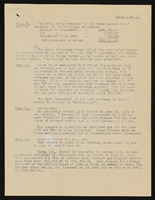Search the Special Collections and Archives Portal
Search Results
James Reece Photographs of El Rancho Vegas
Identifier
Abstract
The James Reece Photographs of El Rancho Vegas depict the Las Vegas Strip's first hotel, El Rancho Vegas, in Las Vegas, Nevada, from approximately 1950 to 1962. The photographs depict a craps table and its operators, owner Beldon Katleman with Eleanor Roosevelt, the hotel's exterior, and military servicemen photographed with one of El Rancho's entertainers, Yvette Dare.
Archival Collection
Harry Hayden Whiteley Photograph Collection
Identifier
Abstract
The Harry Hayden Whiteley Photograph Collection (approximately 1940-1967) contains photographic prints and one photographic negative depicting buildings, people, and project locations associated with the Las Vegas, Nevada architect Harry Hayden Whiteley. There is also one album containing photographs of contemporary churches compiled by Whiteley between 1953 to 1958.
Archival Collection








